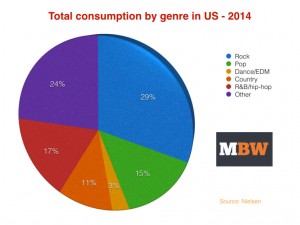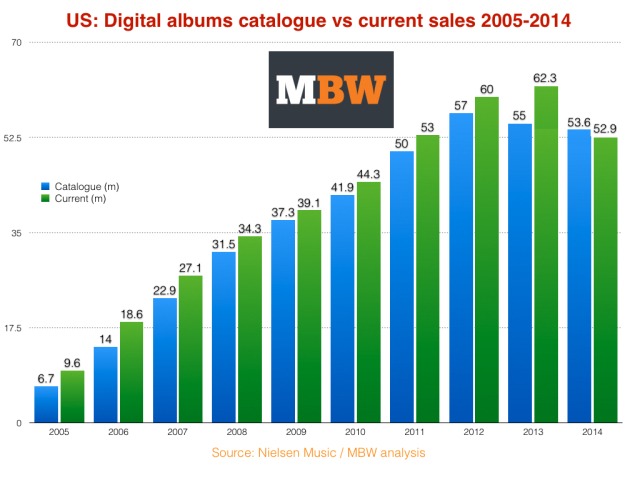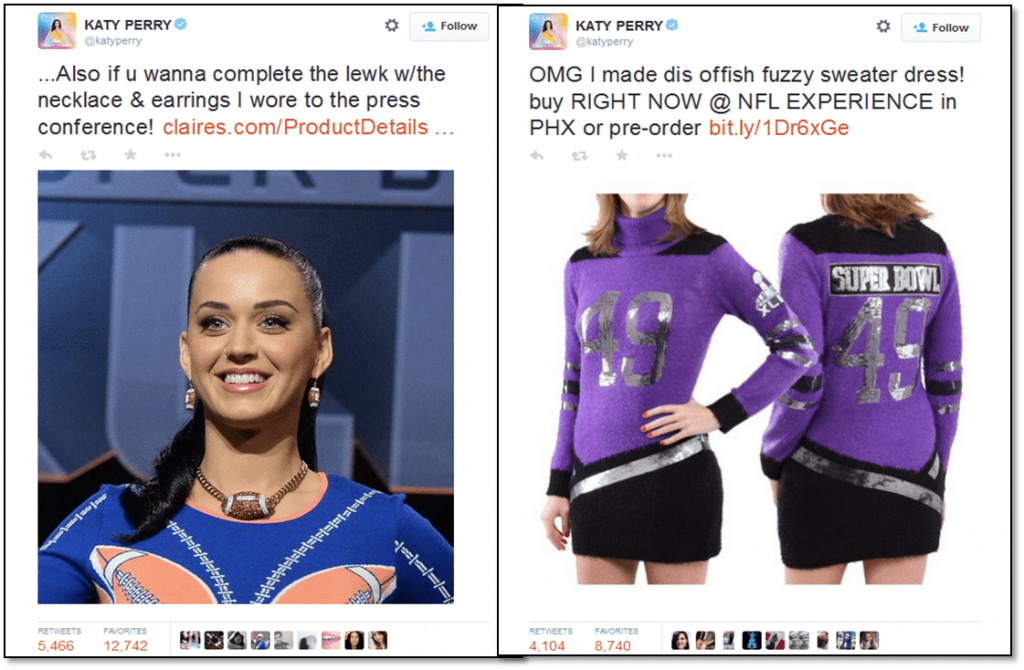Happy New Year, and welcome to another day filled with football and other festivities. And that’s why this “Best of” post focuses on last year’s Super Bowl. Whether you were rooting for those amazing Seattle Seahawks and their enigmatic leader, Russell Wilson, or the dreaded New England Patriots and the iconic and controversial Tom Brady, the big winner of Super Bowl XLIX was Katy Perry.
This post literally went viral when it appeared, fueled perhaps by one of Katy’s many fan clubs, a fact that reinforces our assertion that she wrote the revenue elephant into the sunset that night. Coldplay should only be so lucky this year.
We’re back Monday after the long holiday weekend with fresh-baked content to start 2016 as we begin our preparations for CES 2016. You can also check out our reports in Inside Radio.
To be sure you don’t miss a single post in the new year, take a moment to sign up with your email address in the space over on the right hand side of this page.
And thanks for reading our blog.
You might not have known it from last night’s spectacular halftime performance in “The Big Game,” but Katy Perry has some major issues to sort through. So does Ed Sheeran, Sam Smith, and Ariana Grande. (Maybe not Taylor Swift.)
That’s because something statistically scary happened in 2014 that has never happened before since that advent of digital music. And if you’re a pop star, you may be forced to go the Katy Perry route and focus more on concerts and merch.
It turns out that last year, old albums actually outsold current releases on iTunes in the U.S. A report by Music Business Worldwide confirms it, and the source of this data is none other than Nielsen. While both the sales of catalogue and newer albums both dropped in 2014, the biggest falloff was in the new stuff.
The staying power of older material – OK, let’s just call it Classic Rock – is evidenced by the way that albums that are decades old can make return engagements on the iTunes charts. A case in point mentioned by The Classic Rock/Team Rock group is Tom Petty & the Heartbreakers’ Greatest Hits album. Originally released in 1993, it is inexplicably in the iTunes Top 100.
If you’re surprised by this news and wonder how album sales are slipping for today’s hottest artists, it’s probably because we are so inundated with news, gossip, and television appearances by today’s wave of pop superstars that it’s easy to overlook the fact that even when it comes to actual listening, rock trumps pop.
That’s right, because last month, Nielsen also reported that in America, rock music is twice as popular as pop. You’re reading that stat correctly. Once again, this was reported by Music Business Worldwide who made the point that across total consumption – album and track purchases, as well as streaming – rock music dominated.
 So why don’t we know more about this in the world of radio, and why isn’t this information being factored into format and strategic conversations and meetings?
So why don’t we know more about this in the world of radio, and why isn’t this information being factored into format and strategic conversations and meetings?
The industry is often so fixated with Hot, Amp, and Now formats that it’s easy to forget the power of new and old rock music in American culture. It’s also obvious that so much of what we read and hear about music comes out of New York City, Los Angeles, and Nashville – three markets that are especially non-representative of music tastes throughout the rest of the country.
So as you watched Katy Perry and guests work their magic during halftime last night in Phoenix, don’t forget where her most important performance was really taking place. It was on YouTube, Twitter, Shazam, and connected TV devices from Roku to LG sets as she skillfully hawked her limited edition products. According to Variety, Perry’s fans were able to buy branded items using Twitter’s new “Buy Now” feature, in conjunction with partners Pepsi and Visa. Shazam and Perry’s Vevo channel on YouTube (nearly 15 million subscribers) also served as digital kiosks to sell her merch.
And that’s not to mention her 64 million Twitter followers at @katyperry who were being sold everything from jewelry to clothing. And then there’s her more than 77 million “likes” on Facebook. Those numbers are sure to grow after last night’s extravaganza.
So as the TV ratings for her halftime spectacular are released today, you better believe that Perry’s management team, as well as her interactive commerce unit, Delivery Agent, will be looking at a different set of metrics – the sale of these Katy Perry branded products – because that’s where the real money is being made.
The music wheels are turning, and while some say they’re moving in a retro direction, fans are voting with their feet and their mobile devices – away from buying music and rapidly moving toward concerts, merchandise, and the power of partnerships and the social space.
Katy Perry’s team has read the writing on the wall, and is shifting their business model to commerce reservoirs she can manage and control, especially with social media platforms.
Tom Petty may have an edge with his catalogue sales, but chances are good he’s not outselling Katy Perry when it comes to fuzzy sweater dresses.
- Media In 2025: Believe It Or Not! - January 15, 2025
- Every Company Is A Tech Company - January 14, 2025
- The Changing Face Of Social Media (OR WTZ?!) - January 13, 2025







Leave a Reply